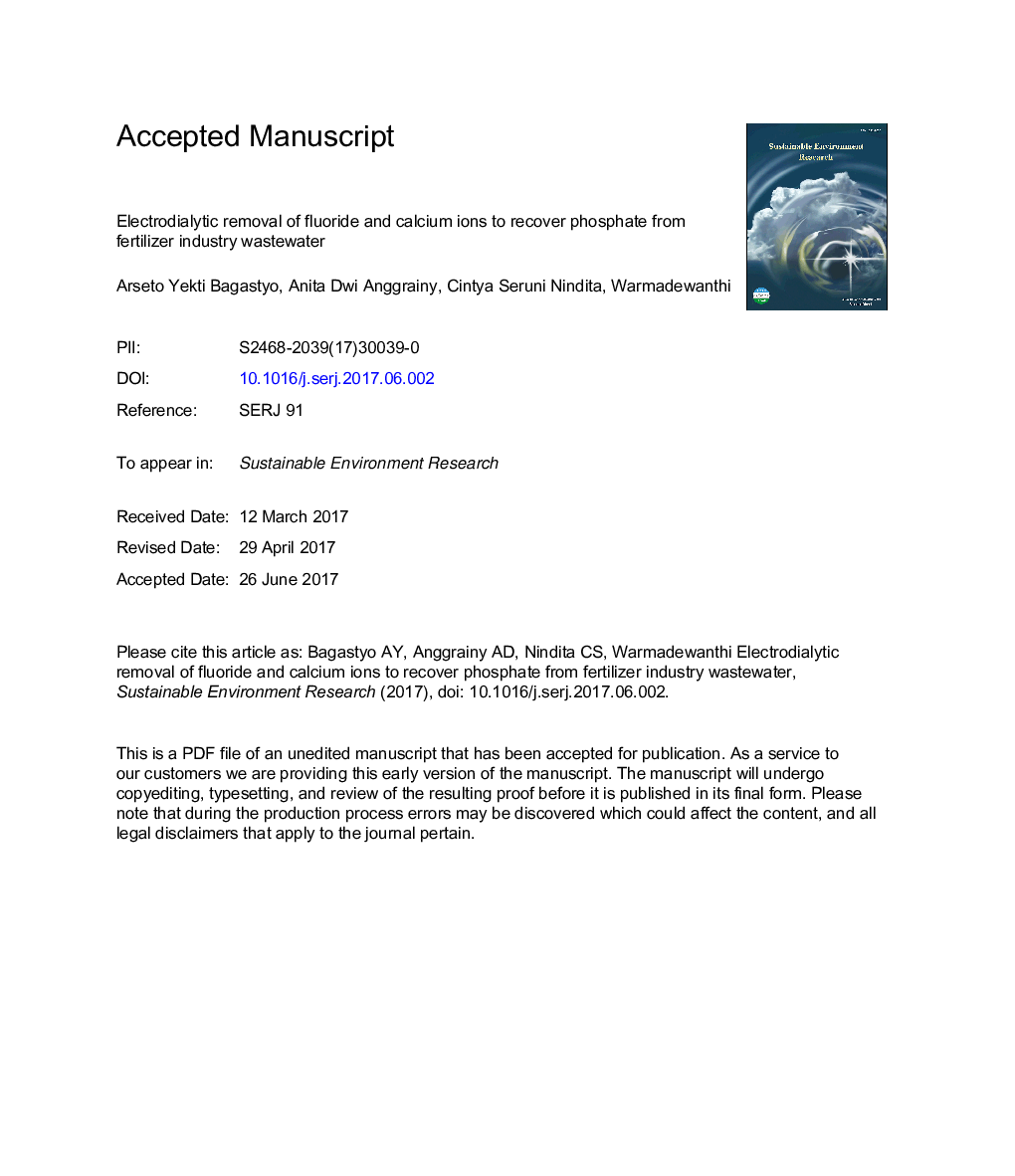| Article ID | Journal | Published Year | Pages | File Type |
|---|---|---|---|---|
| 8862955 | Sustainable Environment Research | 2017 | 27 Pages |
Abstract
The fertilizer industry generates wastewater rich in phosphate and fluoride content, with concentration as high as 4540 and 9720 mg Lâ1, respectively. The untreated wastewater may enhance the growth of algae, promote eutrophication, and create serious effects on environmental health and aquatic life. Therefore, this wastewater has to be treated before releasing into the environment. This study evaluates the performance of a three-compartment electrodialysis reactor to remove fluoride and calcium ions, and recover phosphate present in the wastewater, for possible further use in the fertilizer industry. The experiments were conducted in a batch system at room temperature. A 4 L of wastewater was electrodialysed using three different electrical current (i.e., 0.5, 0.75, and 1.0 A) and two different membrane surface areas (i.e., 100 and 200 cm2). The highest removal of fluoride ions was up to 260 mg Lâ1 (2.7%) by applying 1 A of current and 100 cm2 membrane area. No substantial increase of fluoride and calcium removal was observed for 200 cm2 membrane area. Interestingly, the amount of the remaining phosphate was high (i.e., only 1% removal), implying a very efficient recovery in the feed. The energy required for fluoride ion transfer was much lower than for phosphate ion, i.e., up to 6 vs. 0.12 mol kWhâ1, suggesting that a higher removal of fluoride can possibly be achieved by limiting migration of phosphate ion through the membrane.
Keywords
Related Topics
Life Sciences
Environmental Science
Environmental Engineering
Authors
Arseto Yekti Bagastyo, Anita Dwi Anggrainy, Cintya Seruni Nindita, Warmadewanthi Warmadewanthi,
